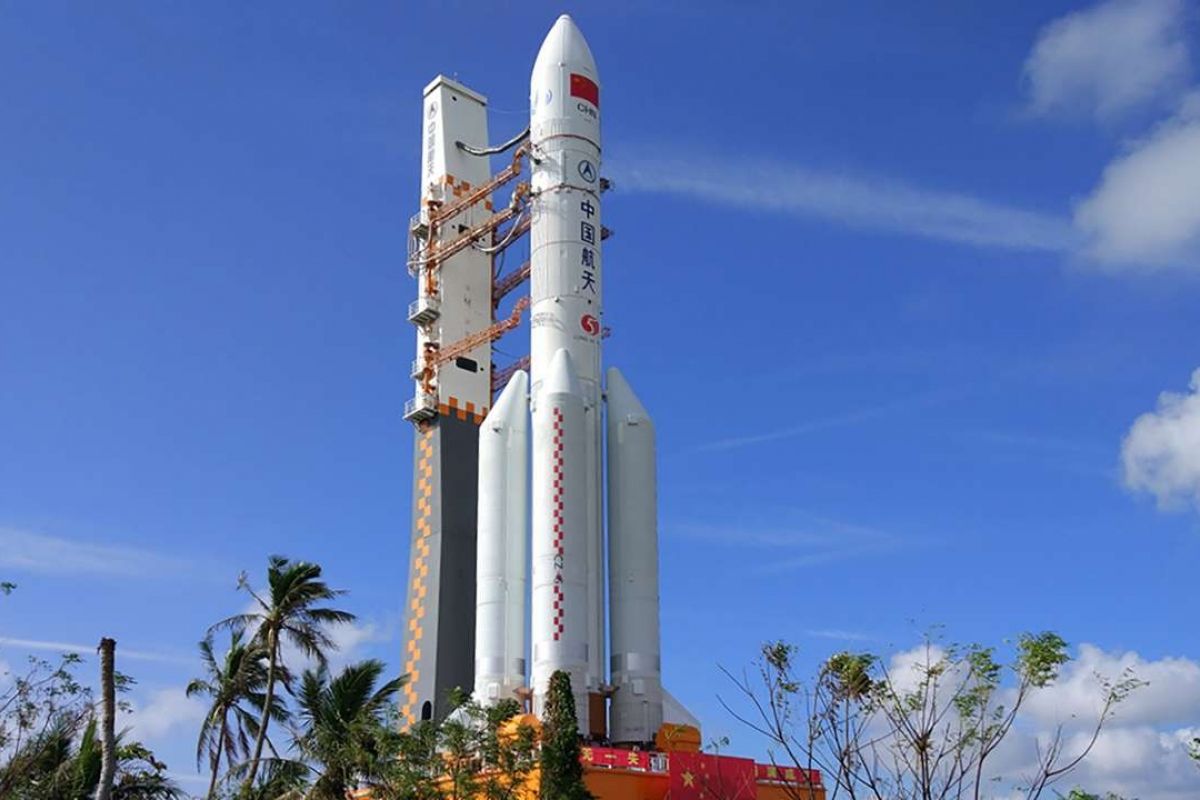China challenges US supremacy in space

A few minutes every morning is all you need.
Stay up to date on the world's Headlines and Human Stories. It's fun, it's factual, it's fluff-free.
China’s government announced through the state-operated Xinhua News Agency on September 6 that it had completed the successful launch and landing of its first-ever reusable spacecraft.
Though there are few details of the craft and no pictures of the event, Xinhua News hailed the successful re-entry and landing of the reusable craft as “an important breakthrough in our country’s research” and one that could promise a “more convenient and inexpensive way” to reach space.
China’s government has been reaching out to space for some time now. In 2019, it became the first country to ever land on the far side of the moon.
This summer alone, China launched its first-ever solo-mission to Mars and completed an array of satellites that will serve as China’s alternative to the United States-operated Global Positioning System, or GPS.
For some, this is a worrying development and constitutes what some US politicians and commentators have taken to calling the second “space race.” The extent to which China’s space program threatens the US’ current space dominance, however, is up for debate.
China’s firsts
China’s stellar aspirations are no new development. It is only the third country in the world to send its own astronauts to space aboard its own rocket, conducting its first manned mission to space in 2003. In 2016, China sent two astronauts to space for 30 days, in what was the country’s sixth human space launch.
The US has only recently begun to once again send astronauts to space aboard its own rockets, this time onboard SpaceX-produced rockets.
But for Jonathan McDowell, an astronomer at the Harvard-Smithsonian Center for Astrophysics, the last year has seen “China’s long-term space ambitions meet their fruition,” with a flurry of Chinese activities and missions in space demonstrating the nation’s lofty ambitions to its competitors and doubters.
The end of 2018 saw China launch its “Chang’e-4” mission, named after the goddess of the moon in Chinese mythology, to the moon’s far side, hoping to complete a feat that has never been achieved before as a result of the difficulty of communicating with the moon’s non-Earth facing side.
The Chinese rover successfully made it to the moon’s far side in January 2019, inaugurating what would prove to be a year of Chinese achievements in space.
Despite the impact of the coronavirus pandemic on the world and on China, in particular, its space program has achieved numerous successes in 2020.
In June, China completed the final piece of the “Beidou” network, an array of several dozen satellites that is estimated to have cost upwards of some US$10 billion.
The Beidou network is one example of China’s strive toward technological independence and equal-footing with the US, with the network standing as China’s alternative to the US-created and operated Global Positioning System (GPS), allowing China a degree of strategic independence by making use of its own network and potentially offering it to others, undercutting the US’ long-held dominance.
China followed its completion of the satellite network by successfully completing the first stage of its ambitious “Tianwen-1” Mars rover mission.
Successfully launching in July, “Tianwen-1” is China’s first solo mission to Mars and, if all goes according to plan, the Chinese lander and rover will touch down on the red planet in February 2021, hailing another achievement in the Chinese space program’s efforts to illustrate its own successes and independence.
Most recently, China’s government and state-run news organization Xinhua News Agency launched the successful launch, orbit and landing of its first-ever reusable spacecraft. Though no photos were published, the spacecraft is said to have spent two days in orbit around the Earth, before landing back at the designated landing site in China.
One Chinese source speaking to The Verge said that the secrecy of the mission was due to the “many firsts” involved in the launch, another sign of China’s efforts to achieve parity in space technologies and capabilities with the US.
A new space race?
China’s increasing interest and successful activity in space has prompted worries among US politicians and analysts.
In a March 2019 speech, US Vice President Mike Pence claimed that the US was “in a space race today, just as we were in the 1960s, and the stakes are even higher.” Pence pointed to what he saw as China’s ambition to “seize the lunar strategic high ground and become the world’s pre-eminent spacefaring nation” as the driving factor behind this new “space race.”
One Foreign Policy article in the aftermath of China’s successful lunar mission claimed that “America Is Losing the Second Space Race to China.” The article went on to envision China’s government as possessing a detailed plan of space dominance by siphoning the moon’s natural resources and building its own communications network which will “deliver space dominance and global hegemony to China’s authoritarian rulers.”
Though China has undoubtedly taken steps toward improving its footing in space, it has yet to build-up an “impending dominance” that will “neutralize U.S. geopolitical power,” as reported by Foreign Policy.
Brian Weeden, the director of program planning at the space think tank Secure World Foundation, claims that the “gap” between the US and the Chinese space programs has indeed “narrowed,” but that “the U.S. is still the leader.”
Despite recently completing its new Beidou network, China’s 300 satellites are still outnumbered by over 1,000 American satellites. America’s agencies and space companies also possess more powerful and reliable rocket technology and a higher share of the commercial launch market.
As Benjamin Charlton, Senior Asia-Pacific Analyst at Oxford Analytica, writes, the headlines China has accrued over the last few years come as a result of “deliberately targeting vacant niches,” such as the far side of the moon in 2019.
This is not to detract from the success enjoyed by China’s space program but instead shows that “the tired trope of the superpower space race does little to make sense” of new developments above Earth, according to Charlton.
Despite its successes, China’s space program and its alleged ambitions of achieving parity in space with the US still have a long way to go.
This month, as China achieved its reusable spacecraft success, one of its rocket boosters plummeted to Earth, nearly landing on a densely populated area in China and causing mass chaos and destruction. Videos captured from a school reportedly showed toxic plumes rising from the crash site in the near distance.
This follows reports of an out-of-control Chinese rocket that shed debris over the West African nation of Côte d’Ivoire, also known as the Ivory Coast, in May 2020, after US analysts reported that Chinese operators had lost control of the rocket as it reentered the Earth’s atmosphere.
Neil Rennon, Professor at the University of Michigan’s Climate and Space Sciences and Engineering department, argues that while China is “getting stronger and more independent” in its ventures in space, its achievements are equally matched in many cases by American ventures.
As Benjamin Charlton argues, “a new space race really would begin” only when China demonstrates “substantial progress towards mining the asteroids, settling the moon, or beaming down solar power from space on a commercial scale,” all feats yet to be achieved by the US.
For now, America’s lead in space, though perhaps less daunting than before, remains dominant.
Have a tip or story? Get in touch with our reporters at tips@themilsource.com




Comments ()